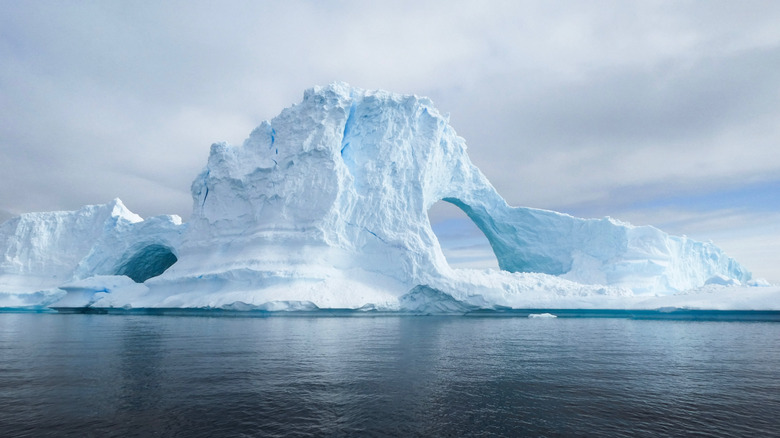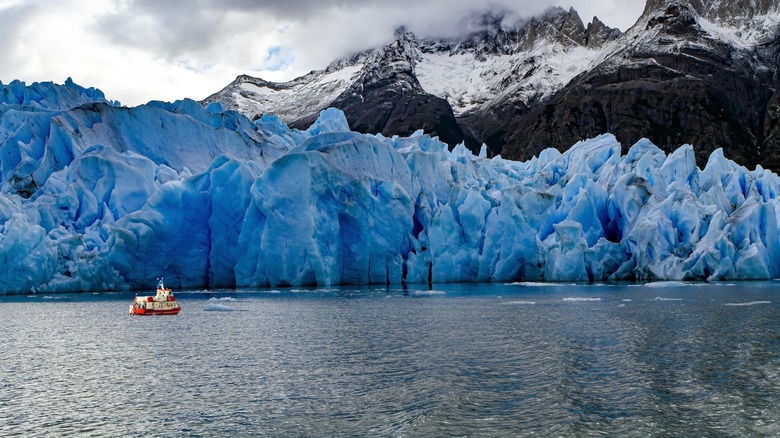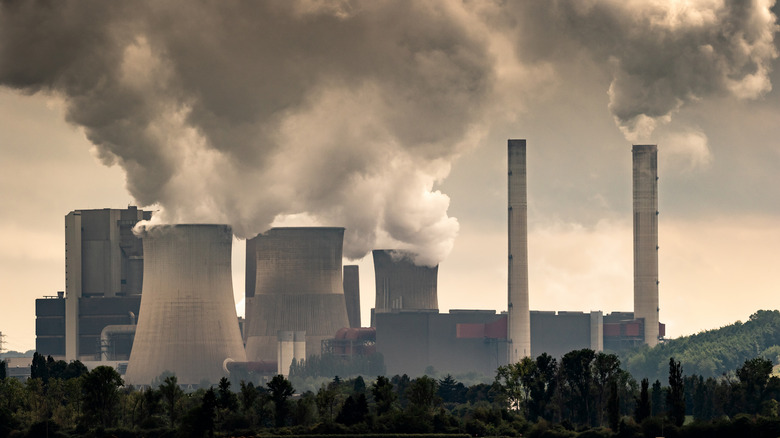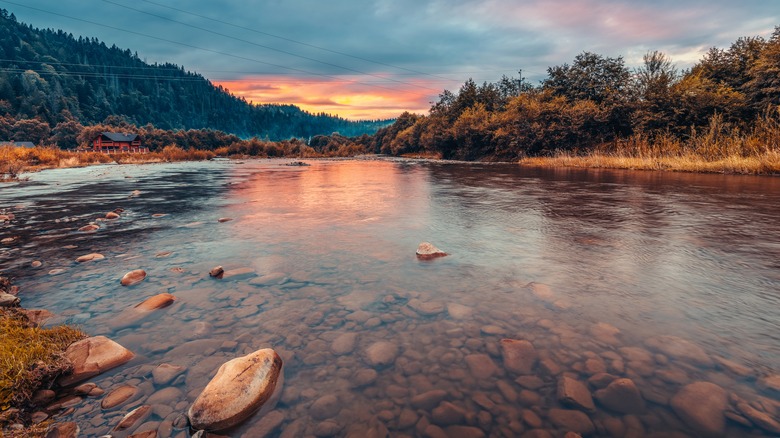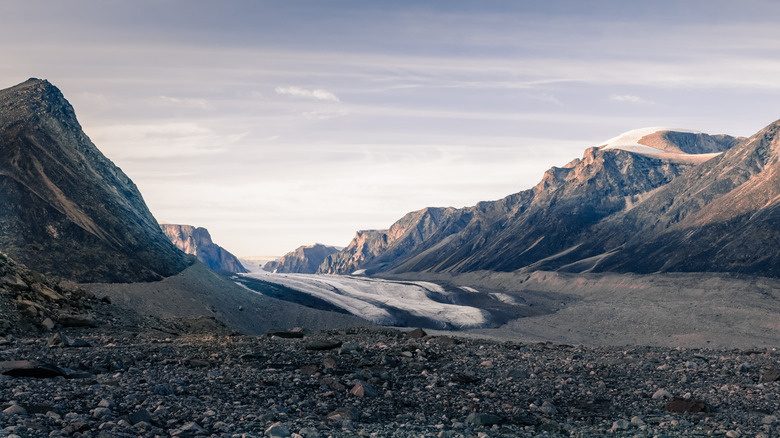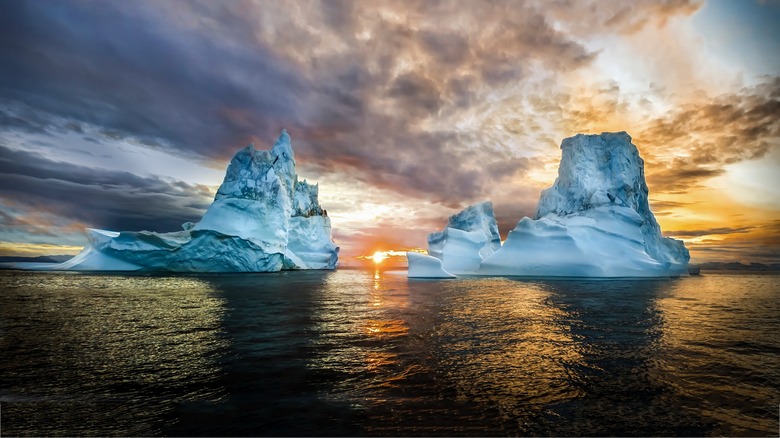Why Glaciers Are Important For Earth
Glaciers are some of nature's most remarkable yet terrifying phenomena. They are mountains of ice, rock, snow, and sediment that creep along oceans, cracking and accumulating as they please. And at the same time, they are slowly disappearing from the world. As BBC explains, glaciers in both Kilimanjaro and Africa are set to disappear entirely by the year 2050. The cause for this is climate change, as researchers note. However, it has gotten to the point where scientists say that no change in global omissions will change their disappearance.
The world is coming to the point of no return with climate change. NASA explains that much of the damage is now irreversible during the average human's lifespan. And though humans can still help stem this damage, time is running out for just how much countries can do. One major effect of this climate inaction is that glaciers around the world are disappearing at record speed (per Columbia Climate School). But what makes glaciers so important for the planet to begin with?
What are glaciers?
Glaciers and icebergs occupy a prominent space in various media, like in the movies "Titanic" and "Interstellar." But what are they exactly? As explained by the United States Geological Survey (USGS), glaciers are basically enormous collections of rock, sediment, ice, snow, and water that form from land. Sometimes glaciers end up in the ocean, but many are found on land. National Geographic states that most of the world's glaciers are found in polar regions. Any glacier classification will depend on various factors such as location, size, thermal regime, and more.
As Britannica explains, the classification goes even further. For example, ice sheets are glaciers if they are continuous, move in all directions, and are as big as either Greenland or Antarctica, with smaller ones being called ice caps. Mountain glaciers are glaciers confined to a specific path. Ice fields are basically glacier complexes covering mountain ranges. Glaciers come about when snow over centuries compresses tightly into sheets and crags of ice.
Just what is happening with glaciers and climate change?
Climate change is essentially long-term changes in global weather patterns and temperatures (per the United Nations). Though a small part of climate change is natural, it is widely accepted by all scientific institutions and literature that the vast majority of it is human-made from the effects of industrialization. As the World Wildlife Foundation (WWF) explains, climate change has a profound impact on nature. One side effect of this is that glaciers globally have been melting at blazing speeds. Greenhouse gases like carbon dioxide have contributed to rising temperatures, which in turn melts glaciers and ice caps.
WWF goes on to estimate that more than a staggering third of all glaciers in the world will be gone by 2100. According to NPR, scientists are currently rushing to figure out ways to prevent glaciers from melting even further. And this research is incredibly important because glaciers aren't just large swathes of ice but a vital source of water for much of the world's population.
Glaciers store an incredible amount of freshwater
Something that many people might not actually be aware of is that glaciers are a vital source of freshwater for a good chunk of the world. As NPR explains, over a billion people need glacier ice for food, power, water, and so on. Given that glaciers are basically huge rivers that snake and sprawl throughout mountain ranges across the planet, the people living near these places get freshwater from this source. Himalayan people, those in the Andes, and so on are just a few examples of places very dependent on glacier water.
Glaciers act as water storage, providing water during even the driest parts of the year. Without this, some people might not have access to water year-round. In fact, as the USGS states, an estimated three-quarters of all the freshwater on the planet is kept in glaciers, making it the largest freshwater reserve that humanity has available.
Glaciers also have a dramatic impact on the landscape
Glaciers can also have a profound effect on the landscape itself. According to the National Park Service, glaciers have the ability to carve and sculpt the land itself through erosion. This erosion is then followed by enormous amounts of rock and sediment deposits, changing the physical makeup of the landscape over time. The same erosion comes in the form of two different processes: Plucking and abrasion. Abrasion is basically when the coarse, sandpaper-like ice bottom of a glacier grinds down bedrock as it slides across it, creating striations or scratches. Plucking is when cracks in the bedrock below a glacier grow and combine, breaking off chunks of rocks that the ice then carries away.
As Sciencing explains, glaciers sometimes create what are called glacial troughs. These are large, steep-sided valleys with a long U-shape and flat floors carved out by glaciers over time. Fjords are a type of coastal trough that can be created through glacial carving, which becomes flooded with ocean water after a glacier recedes, as is the case with Norway's fjords. Other types of glacier landforms include cirques (circular basins carved out), horns (peaks with sharp edges), and aretes (rock crests formed from glacial carving).
Glaciers are important for studying the impacts of climate change
On top of being extremely helpful freshwater reserves, glaciers also happen to be one of the most important measurements of climate change that science has access to. As the Environmental Protection Agency (EPA) explains, scientists use glacier changes to measure temperature and precipitation changes. Glaciers often shrink or grow, recede or advance, which is a very useful signal as to how the climate is also changing. Scientists can also determine rising sea levels by measuring ice loss in glaciers. The more ice glaciers lose, the higher sea levels go.
Over the past few years, researchers have also been using NASA laser technology to measure ice changes as well. As NASA explains, high-altitude aircraft carrying laser equipment use photon-counting technology to study these changes. Sea ice, ice sheets, glaciers, and so on reflect light photons, which can be tracked with the technology to give a more in-depth analysis of their behavior. Only time will tell whether the world will eventually listen to the science and begin to take action toward stopping climate change.
